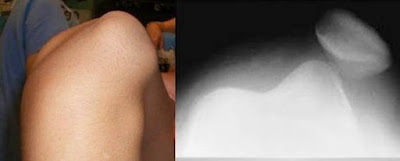Knee dislocations occur when the knee is disrupted because of multiple torn ligaments in the joint. Typically, this happens in vehicle crashes or contact sports like football. There is an increase in knee dislocations among obese patients with an increased risk of vascular injury to the main artery that runs down the leg behind the knee.
The symptoms of a kneecap dislocation will vary based upon how the injury occurred as well as the severity of the damage to the knee joint. Common symptoms are : immobility, bruising repositioning of the patella, pain when standing and swelling.
Vascular injury is a severe complication because if undiscovered and untreated, it can lead to amputation of the leg. The odds of vascular injury during a knee dislocation were twice as high among obese or morbidly obese people than for normal-weight people.
Orthopaedic and emergency medicine clinicians should have a heightened awareness for the potential of a knee dislocation in the obese patient following a low-energy fall. If you have torn ligaments with dislocation call your doctor immediately, do not attempt to reset your knee. You may need to have surgery depending on the severity of the tear.
haleplushearty.blogspot.com



